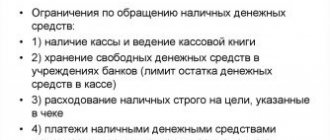Characteristics of fixed assets
To achieve maximum understanding of what is happening, let us recall the concept of fixed assets and the properties that they possess. So, OS are non-current assets of an enterprise that have a tangible form and retain it during operation. Such objects are created for long-term use.
While they are useful, the operating systems are one way or another involved in the company's business operations. This means that their cost must be included in the cost of finished products. How does this happen? Of course, in parts. In equal shares for the category of goods in the process of creation of which the fixed asset is used. What does this portion of the cost attributable to equipment or facilities look like? This is depreciation. Every month, the calculated amount accumulates in account 02, which is then written off to the cost of production.
https://youtu.be/b03NomqmC5c
Reasons for disposal of fixed assets
The first thing that comes to mind when we talk about the liquidation of property is its moral and material obsolescence, that is, wear and tear in all respects. This usually happens in the normal course of business. The equipment has served its intended life, depreciation charges have been paid in full - the object can be written off. And if it is in good condition, upgrade it or sell it for parts.
If you think more broadly and consider all possible scenarios that can happen at an enterprise, it turns out that there are many more reasons for writing off fixed assets:
- sale;
- exchange for other property according to an exchange agreement;
- donation;
- breakdown due to emergency;
- premature wear;
- theft of property.
In each specific situation, there will be a need to draw up appropriate documents confirming the reason for the disposal of fixed assets and to record the completion of a business transaction in the accounting accounts.
Other Disclaimers
In addition to these features, there are also several other important nuances that need to be taken into account in the process of writing off fixed assets.
Depreciation process
Depreciation is carried out from the moment the production assets were registered with the organization until the full repayment of the cost or in the case of write-off of fixed assets due to their excessive wear and tear. Any entries made for depreciation charges are made to account 02, while the credit for passive and balance sheet accounts fully reflects the total amount of accruals for the specified object.
By debit, the depreciation amount is written off only in the case of write-off of non-current assets, and the procedure itself can be carried out using the following methods:
- linear;
- write-off due;
- by reducing balance"
- in proportion to the ratio of the volume of production of commercial products.
The choice of methods remains with the enterprise, and must be reflected in the accounting policies. Taking into account the chosen scheme, which is determined on the basis of information about the fund’s inventory objects, this amount is posted on loan 02.
Such expenses can lead to an increase in the cost of property of certain divisions that operate fixed assets.
Trading companies include all depreciation charges in costs.
https://youtu.be/D8GP7z03hUQ
Defective statement
When preparing a defective statement, you must indicate the following information:
- justification for why this procedure is advisable from an economic point of view;
- a source of information within the company to analyze the reason for the depreciation of fixed assets;
- a document indicating the expert's decision.
This statement contains information confirming the fact that there is no possibility of further operation of fixed assets, which led to the need to write them off.
Service memo
The preparation of a memo should be carried out in accordance with some recommendations:
- on the right side the full name and position of the addressee are indicated;
- You must indicate the title of the document;
- the date and registration number of the note are indicated;
- the specific subject of this document is reflected;
- description of the situation;
- signature of an authorized person.
An official note when writing off fixed assets is required only if the object has suffered wear and tear or its material and technical base is considered obsolete.
General instructions
How to write off fixed assets from the balance sheet of an enterprise, i.e., document the fact of decommissioning? Whose authority is it to decide whether a property is fit for use or whether it’s time to retire it? Accounting policy comes to the rescue. It should contain clear instructions on how to write off fixed assets from the balance sheet. In general, a commission is created that is authorized to consider the suitability of the property, the advisability of its use and liquidation. It consists of the head of the enterprise, an accountant and the head of the department in which the OS is installed. In some cases, independent experts may be invited to fully evaluate the technical characteristics of the object.
The decision of the commission is documented. If the liquidation of the property is approved, decommissioning work is carried out and the corresponding accounting entries are made.
Documentation of OS write-off
Every action with the company's property must be documented. We do not have the right to simply throw away or otherwise dispose of an asset that we cannot or do not want to use in our business.
How to write off fixed assets from the balance sheet? Who should initiate this procedure and who will be involved in it? What documents will be required to write off fixed assets?
The procedure for writing off fixed assets includes several stages, at each of which certain documents are drawn up.
Stage 1. Initial information to management
At this stage, the employee tasked with monitoring the safety of a specific asset informs management that the fixed asset has become unusable. At the same time, the reasons for writing off the asset are communicated to management: the asset is morally obsolete, physically worn out, has become unusable due to a breakdown, etc.
The first stage document is a memo.
Stage 2. Organizational
The manager who received the memo cannot, solely on its basis, give the accountant an order to write off the asset from accounting. First, it is necessary to objectively assess the condition of the fixed asset and obtain reasonable conclusions about the impossibility of using it in the company’s activities.
The second stage document is an order to create a commission to write off a fixed asset.
You can find more complete information on the topic in ConsultantPlus. Full and free access to the system for 2 days.
Stage 3. Work of the commission on write-off of fixed assets
At this stage, fixed assets subject to write-off are comprehensively examined by a commission created in the company. She not only studies the asset itself, but also examines the reasons why it became inoperable, identifies the culprits, studies technical documentation, requests economic and financial information about the object, makes the necessary calculations, identifies the operating conditions of the OS and other circumstances that allow justified conclusions about the need to write off the asset from the balance sheet.
Documents of the third stage - defective act, minutes of the commission meeting, conclusion of the commission on write-off (as a separate document or as a section of the protocol, act).
If you do not organize the work of the commission, claims from the tax authorities are possible. When writing off fixed assets with a residual value, the expenses reflected in tax accounting may be considered unjustified.
Stage 4. Administrative
After the commission’s conclusions reach the head of the company and if he agrees with them (considers the commission’s conclusions to be justified), another order is issued. It describes in detail the subsequent write-off procedure, indicating the responsible executors and the deadlines for fulfilling management’s instructions.
The rules for writing off fixed assets are described in paragraphs. 75–86 Methodological guidelines for accounting of fixed assets (approved by order of the Ministry of Finance dated October 13, 2003 No. 91n). If necessary, these recommendations can be supplemented with other procedures and documents based on the specifics of the enterprise. The amended procedure should be recorded in a local act (for example, in a regulation on the write-off of fixed assets of an enterprise or instructions on the procedure for recording and writing off assets).
The fourth stage document is an order to write off a fixed asset.
Stage 5. Final
To reflect the write-off of a fixed asset in accounting, a special document is required containing all the necessary information about the object being written off, including its natural and cost indicators. It must be signed by the responsible persons and approved by the manager. This document, complete with other papers collected and executed at the previous stages, will serve as the basis for writing off the fixed asset from the balance sheet and recognizing the corresponding amount of expenses in accounting and tax accounting.
The fifth stage document is the act of writing off a fixed asset.
In fact, documenting the write-off may not end there. If the object being written off is subject to disassembly, suitable parts and assemblies must be entered into the warehouse and reflected in accounting. For this, the appropriate documents must also be drawn up. If the object is disposed of by a third-party contractor, a separate document will also be required to justify the costs of disposal - an acceptance certificate for the work performed.
Let us dwell in more detail on the preparation of individual documents for the write-off of fixed assets, as well as the nuances of the write-off procedure and the features of their reflection in accounting.
Documentation preparation
After the commission has inspected the facility and established the reasons for the need for decommissioning, the data obtained is recorded in the decommissioning act. Drawing up this document is a mandatory condition for the disposal of property from the balance sheet of the enterprise. The Ministry of Finance of the Russian Federation has developed unified forms of acts:
- OS-4 – for fixed assets in the amount of 1 piece;
- OS-4a – for organization transport;
- OS-4b – for several pieces of property.
The document is filled out in two copies, one of which is intended for the accountant, and the second for the person financially responsible for the property. The reason for decommissioning the OS must be indicated. If liquidation occurs due to someone else’s fault, employees (other individuals) must be indicated in the act.
All available information about the object is also entered here: the date of registration, commissioning, the amount of initial and residual value, accumulated depreciation, repair work performed (if any), and other data directly related to the use of the property subject to write-off .
How to write off fixed assets from the balance sheet: fill out the act
The OS-4 act form, confirming the liquidation of property and giving full right to carry it out, consists of three tables. The first of them is filled out based on the data in the acceptance certificate of the fixed asset. Here the characteristics of the asset are recorded, including cost, accumulated depreciation and total useful life.
The second table describes the individual characteristics of the property, which were usually previously included in the acceptance certificate. The third part is devoted to the costs associated with the liquidation of assets, as well as the benefits that arise in the event of the sale of residual material or spare parts. The results of the decommissioning of the facility are summed up, which are then written off in the financial results.
Liquidation of OS due to expiration of the term of use
Every asset has a useful life, whether it is a building or an industrial piece of equipment. The organization can write off fixed assets later. Postings during liquidation after the end of the recommended period for operation and immediately after its onset are no different.
Characterize the write-off of an object of fixed assets by transactions carried out by an accountant. It is assumed that the amount of the asset's cost is fully transferred to current costs. This statement confirms the zero final balance on account 01 after the transaction, which does not require additional quotes for writing off balances.
How to write off fixed assets from the balance sheet under the simplified tax system?
The simplified tax regime largely distinguishes accounting from generally accepted standards. Regulates the procedure for writing off property from the balance sheet of small businesses - the Tax Code of the Russian Federation (Article 346.16). According to the Code, upon disposal of fixed assets, the use of which in the future is not possible, their value is not included in the tax base in full. The amount remaining on the balance sheet upon liquidation of non-current assets is not taken into account for tax purposes.
If the disposal of fixed assets occurs earlier than the due date, it is necessary to recalculate the tax base. In case of write-off due to moral or physical wear and tear, small businesses do not comply with this point.
Disposal due to wear and tear
How to write off depreciated fixed assets from the balance sheet? This is perhaps the easiest case for an accountant. If the period of expected useful use completely coincides with the actual one, then the residual value is equal to zero and after drawing up a write-off act, the object ceases to be included in the assets of the enterprise.
When moral or physical wear and tear occurs earlier than planned, it is necessary to make calculations that will require data on:
- initial cost of the object (purchase price + installation + delivery);
- accumulated depreciation for the period worked (credit to the corresponding subaccount 02);
- residual value equal to the difference between the original cost and accumulated depreciation.
The last value is written off from account 01. The final result of the liquidation of property is included in the financial result.
The sequence of entries characterizing the write-off from the balance sheet of fixed assets that have become unusable due to wear and tear can be traced in the table:
Disposal of fixed assets
| Dt | CT | Characteristics of a business transaction |
| 01 "Disposal" | 01.1 | The amount of the original cost of the object has been written off |
| 02 | 01 "Disposal" | The accumulated depreciation for the entire period is written off |
| 91.2 | 01 "Disposal" | Expenses for liquidation of property are taken into account |
The compiled entries fully show how to write off fixed assets from the balance sheet. If a positive liquidation value is formed, its value is credited to account 91.1.
Postings for write-off of fixed assets
| Account Dt | Kt account | Transaction amount, rub. | Wiring Description |
| Moral and physical wear and tear of fixed assets | |||
| 01-B | 01 | 150 000 | Write-off of the primary cost of an item of fixed assets |
| 02 | 01-B | 125 000 | Write-off of accrued depreciation |
| 91-2 | 01-B | 25 000 | Write-off of an asset at its residual value |
| 91-2 | 70 (69,76) | 15 000 | Overhead costs associated with asset write-off |
| 10 | 91-1 | 25 000 | Materials were capitalized at their market value, which remained when the OS was written off and can be used in the repair of similar OS |
| Sale of fixed assets | |||
| 01-B | 01 | 80 000 | Write-off of the primary cost of an item of fixed assets |
| 02 | 01-B | 20 000 | Write-off of accrued depreciation |
| 91-2 | 01-B | 60 000 | Write-off of an asset at its residual value |
| 62 (76) | 91-1 | 50 000 | The fixed asset was sold (revenue from the sale was accrued) |
| 91-2 | 68 | 9 000 | VAT accrued on this transaction |
| 83 | 84 | 5 000 | Write-off of the amount of additional valuation of the sold non-current asset |
| Contribution to the authorized capital of another organization | |||
| 01-B | 01 | 74 000 | Write-off of the primary cost of an item of fixed assets |
| 02 | 01-B | 14 000 | Write-off of accrued depreciation |
| 58 | 01-B | 60 000 | Contribution of fixed assets as a contribution to the authorized capital of another organization |
| Free transfer (donation) of OS | |||
| 01-B | 01 | 56 000 | Write-off of the primary cost of an item of fixed assets |
| 02 | 01-B | 13 000 | Write-off of accrued depreciation |
| 91-2 | 01-B | 43 000 | Write-off of an asset at its residual value |
| 91-2 | 70 (69,76) | 15 000 | Overhead costs associated with OS transfer |
| 91-2 | 68 | 2 700 | VAT calculation |
| Theft and theft of fixed assets | |||
| Write-off of uninsured fixed assets | |||
| 01-B | 01 | 90 000 | Write-off of the primary cost of an item of fixed assets |
| 02 | 01-B | 30 000 | Write-off of accrued depreciation |
| 94 | 01-B | 60 000 | Write-off of an asset at its residual value |
| 99 | 94 | 60 000 | Write-off of value as a loss to the enterprise |
| Write-off of insured fixed assets | |||
| 01-B | 01 | 60 000 | Write-off of the primary cost of an item of fixed assets |
| 02 | 01-B | 35 000 | Write-off of accrued depreciation |
| 91-2 | 01-B | 25 000 | Write-off of an asset at its residual value |
| 51 | 76 | 40 000 | Insurance compensation received |
| 76 | 91-1 | 40 000 | Display of profit (insurance compensation) |
| Return of stolen OS | |||
| 01 | 94 | 60 000 | Restoring the residual value of a stolen object |
| 01 | 02 | 30 000 | Restoration of accrued depreciation |
| Liquidation due to emergency situations | |||
| 01-B | 01 | 300 000 | Write-off of the primary cost of an item of fixed assets |
| 02 | 01-B | 275 000 | Write-off of accrued depreciation |
| 91-2 | 01-B | 25 000 | Write-off of an asset at its residual value |
| 91-2 | 60 | 10 000 | Overhead costs associated with the liquidation of an operating system |
| 60 | 51 | 10 000 | Transfer of money for liquidation of OS |
| 99 | 91 | 35 000 | Display of financial result |
| Partial liquidation of a fixed asset | |||
| 01-B | 01 | 40 000 | Write-off of a certain part of the initial cost of an asset |
| 02 | 01-B | 25 000 | Write-off of the corresponding part of accrued depreciation |
| 91-2 | 01-B | 15 000 | Write-off of the initial cost of a partially liquidated fixed asset |
- Postings for the acquisition of fixed assets
- Account 02 in accounting: entries and examples of depreciation of fixed assets
- Postings for the sale of fixed assets
- Postings for depreciation of fixed assets
Sale of property
Nobody prohibits an enterprise from selling assets on legal terms. To collect information about expenses and income that resulted from the process of selling property to another individual or legal entity, account 91 is used. Amounts of costs are accumulated in the debit, and revenues are accumulated in the credit.
Write-off from the balance sheet of fixed assets in the event of a sale, in addition to the write-off act and the purchase and sale agreement, is accompanied by the following transactions:
- Dt 01 “Disposal” Kt 01.1 – for the amount of the initial cost of the property.
- Dt 02 Kt 01 “Disposal” - for the amount of accumulated depreciation.
- Dt 91.2 Kt 01 “Disposal” - by the amount of the residual value of the asset.
- Dt 62 Kt 91.1 – reflects the amount of proceeds from the sale of property.
- Dt 91.2 Kt 68.2 – VAT is charged on the sold fixed assets.
As can be seen from the example, most of the entries coincide with the algorithm for writing off property due to wear and tear.
Approval procedure
Currently, there is a Regulation on the specifics of writing off federal property, approved by Decree of the Government of the Russian Federation of October 14, 2010 No. 834 (hereinafter referred to as the Regulation on Write-off). This resolution defines the specifics of writing off movable and immovable property in federal ownership and applies to all federal government institutions, regardless of their type. According to clause 2 of the Regulations on Write-off, write-off of federal property is understood as a set of actions related to the recognition of property as unsuitable for further use for its intended purpose and (or) disposal due to the complete or partial loss of consumer properties, including physical or moral wear and tear, or having been retired from use. possession, use and disposal due to death or destruction, as well as the impossibility of establishing its location. The meaning of writing off property in this paragraph partly coincides with the conditions for recognizing property as an asset given in paragraph 8 of the GHS OS, with the exception that this paragraph talks about the need to take into account property that is not recognized as an asset off the balance sheet. And according to the Regulations on write-off, property disposed of during write-off, as a rule, is on the balance sheet until the final decision of its owner. The regulation on write-off requires the creation on an ongoing basis of a commission to prepare and make the appropriate decision. Note! In accordance with clause 7 of the Regulations on write-off, the period for consideration by the write-off commission of documents submitted to it should not exceed 14 days. The procedure for agreeing on a decision to write off property at the federal level is regulated by the joint Order of the Ministry of Economic Development of the Russian Federation and the Ministry of Finance of the Russian Federation dated March 10, 2011 No. 96/30n
.
According to clause 3 of this procedure, federal executive authorities are given 45 calendar days
from the moment they receive the relevant documents for their consideration or for sending a refusal to approve the write-off decision. As can be seen from the above, the period of approval procedures until the moment of write-off can last about two months, and in practice this period can be even longer.
Contribution to the authorized capital of another enterprise
How to write off fixed assets contributed by a share contribution from the balance sheet? For such purposes, account 58 is provided. Investing in the authorized capital of another organization is often a profitable way for an entrepreneur. The postings are made as follows:
- Dt 01 “Disposal” Kt 01.1 – for the amount of the initial cost of the property.
- Dt 02 Kt 01 “Disposal” - for the amount of accumulated depreciation.
- Dt 91.2 Kt 01 “Disposal” - by the amount of the residual value of the asset.
- Dt 58 Kt 01 - reflects the amount of the contribution to the authorized capital of another enterprise.
It is worth noting that share contributions cannot be classified as sales, and therefore VAT is not charged on the amount of the contribution.
Write-off of OS as a result of physical or moral wear and tear
Wear and tear can be physical - this can include the failure of equipment due to a long period of use.
Obsolescence can be moral - for example, computer technology often becomes obsolete, so companies write off obsolete computers and replace them with modern ones.
The write-off of OS due to wear and tear is recorded with the following entries:
Debit 01 subaccount “Disposal” Credit 01 - the original cost is written off;
Debit 02 Credit 01 subaccount “Disposal” - accrued depreciation is written off;
Debit 91 Credit 01 subaccount “Disposal” - the residual value is written off.
Free transfer
The organization is free to dispose of property at its own discretion. The main thing is that the actions taken comply with established legislative acts. When donating property, how to write off fixed assets from the balance sheet? Postings begin with the same steps: deducting the original cost and accumulated depreciation. The residual value is then written off to Other Expenses. The account also collects other costs for the gratuitous transfer of the object. VAT is also calculated based on the current market value of the property.
What is the difference between accounting for an act of donation and a sale? In the first case, income cannot be generated in any way, only costs. When implemented, the company has a chance to receive income and make a profit, or at least cover expenses. The financial result (loss) from the donation of assets is written off by posting Dt 99 Kt 91.9.
Liquidation of OS due to wear and tear
Often, production equipment becomes unusable long before the end of the service life provided for by the technical characteristics of the facility. The accountant carries out several operations: records the residual value and writes off depreciation of fixed assets. Postings are made in the prescribed manner:
- The initial price of fixed assets is credited (Dt “Disposal of fixed assets” Cht “fixed assets”).
- The depreciation cost is reflected (Dt “Depreciation of fixed assets” Cht “Disposal of fixed assets”).
- The residual value of fixed assets is written off (posting Dt “Income” Cht “Disposal of fixed assets”).
In addition to the debit balance of the account. 01, in sch. 91.1 includes other costs for liquidation of fixed assets. Materials and spare parts arrive in the same order as when written off after the end of their service life.
Partial liquidation of property
It is not possible to write off a fixed asset completely from the balance sheet. The method is often used for real estate for the purpose of modernization, redevelopment or other uses. If we are talking about structures and buildings, then the part unsuitable for use can be demolished while the main part remains in place.
It turns out that in fact the fixed asset remains in the assets of the enterprise, but its value changes. In this regard, there is a need to revaluate the property, as well as recalculate depreciation charges. The amounts of expenses and income from partial liquidation are reflected in account 91.
How to write off fixed assets from the balance sheet correctly? To do this, you need to subtract the original value from the current value, the amount of depreciation and get the balance, which is then reflected in account 91 of the accounting.
Documentary support
In the process of writing off property, the following documents may be drawn up:
| Act OS-1 | Compiled for any OS, with the exception of capital structures. |
| OS-1a | For any immovable structures and buildings. |
| OS-1b | If a group transfer of property is required. |
You may also need forms prepared according to OS 4, 4a and other forms. Thus, it will be necessary to prepare a package of documents confirming the write-off of fixed assets, as well as indicating the presence of arguments related to the inability to use this property in the future.








